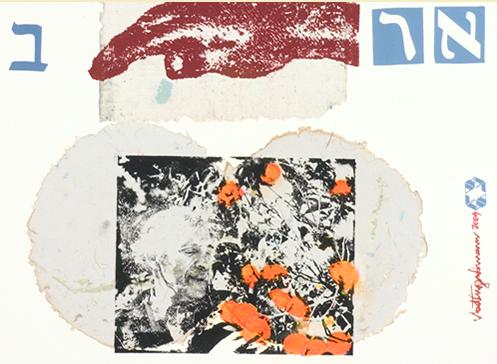Fictional Indexes for a singular testimony: Shoah and the quest for an unspeakable historical narrative
DOI:
https://doi.org/10.17851/1982-3053.4.6.43-58Keywords:
Shoah, Semiotic, CinemaAbstract
Based on the semiotic analysis of an episode of the documentary Shoah (Lanzmann, 1985), the present text deals with a problem related to the indexical action of signs in it. What is the nature of a film which attempts to reconstruct meticulously the time of unimaginable horror based on the testimonies of survivors, but which sometimes uses staged, fictional indexes? This is precisely what takes place in one of the most evoked and moving moments in the over nine hour-long documentary Shoah. The aim of this article is to reflect systematically on the semiotic characteristics of a film genre which has a historical calling but which differs overtly from the traditional historical discourse.
Downloads
References
ANDACHT, Fernando. Le documentaire à l'âge de la télé-réalité. Nouveaux indices du monde: aspects du documentaire contemporain J. L. Lioult (Ed.). Marseille: Publications de l'Université de Provence, collection Hors Champ, 2008, p. 35-48.
ANDACHT, Fernando. Iconicity revisited: an interview with J. Ransdell. Recherches Sémiotiques-Semiotic Inquiry. v. 23, 2003, p. 221-240.
AUERBACH, Erich. Mimésis: la représentation de la réalité dans la littérature occidentale/Traduit de l'allemand par Cornelius Heim. Paris : Gallimard, 1968, p. 11-34.
BARTHES, Roland. Chambre claire. Notes sur la photographie. Paris: Seuil, 1981.
BARTHES, Roland. (1968). L’effet de réel. Communications, n. 11, p. 84-89.
CARROLL, N. e CHOI, J. Fiction, non fiction and the film of presumptive assertion: a conceptual analysis. En: Philosophy of film and motion pictures. An Anthology. London: Blackwell, 2006, p. 154-172.
CARUTH, C. (1991). Unclaimed Experience: Trauma and the Possibility of History. Yale French Studies, n. 79, p. 181-192.
DILEO, J. Peirce’s haecceitism. Transactions of the Charles S. Peirce Society, Vol. 27 Issue 1, 1991, p. 79-109.
FELMAN, S. In an era of testimony: Claude Lanzmann’s Shoah. Yale French Studies, n. 79, 1991, p. 79-109.
FUMAGALLI, A. El índice en la filosofía de Peirce. Anuario Filosófico XXIX/3, 1996, p. 1127-1440.
GUTKIN, L. Grief, Survival, and the Ethical Real, The Øther: the online journal of the San Francisco Society for Lacanian Studies. Retirado el 10.8.09 de . LaCapra, D. History and memory after Auschwitz, Ithaca, NY: Cornell University Press, 1998.
LANZMANN, Clade. et al. (1991). Seminar With Claude Lanzmann, 11 April 1990. Yale French Studies, n. 79, p. 82-99.
LANZMANN, Claude. Shoah, 1985.
LEFEBVRE, M. e FURSTENAU, M. Digital. Editing and Montage: The Vanishing Celluloid and Beyond. Cinémas. v. 13, n. 1-2, 2002, p. 69-107.
MAGARIÑOS DE MORENTIN, J. Los bordes de la semiótica. Apuntes de metodología semiótica. Córdoba: Comunicarte, 2008.
PEIRCE, Charles S. Collected Papers of C. S. Peirce, C. Hartshorne, P. Weiss, A. Burks (Ed.). Cambridge, Ma: Harvard University Press, 1931-1958.
RANSDELL, J. The epistemic function of iconicity in perception. Retirado el 10.03.99 de Arisbe. Peirce Gateway, 1979. Disponível em: http://www.cspeirce.com/menu/library/aboutcsp/ransdell/epistemic.htm.
ROBIN, R. Annotated catalogue of the papers of C.S. Peirce. Worcester: The University of Massachusetts Press, 1967.
SARLO, Beatriz. Subject and Experience: A Critique of the First Person, Review: Literature and Arts of the Americas, 40:2, 2007, p. 331-342.
SMITH, H. Abraham Bomba, Barber of Treblinka. The Journal of Historical Review. Spring, 1986, v. 7, n. 2, p. 244-253.
Torner, C. The Silence of Abraham Bomba. Retirado el 20.06.07 de Words without borders. The Online, 2005, Magazine for International Literature.
Downloads
Published
How to Cite
Issue
Section
License
Os direitos autorais pertencem exclusivamente aos autores. Os direitos de licenciamento utilizados pelo periódico é a licença Creative Commons Attribution 4.0 (CC BY 4.0): são permitidos o compartilhamento (cópia e distribuição do material em qualquer meio ou formato) e adaptação (remix, transformação e criação de material a partir do conteúdo assim licenciado para quaisquer fins, inclusive comerciais.






